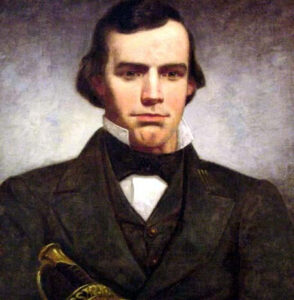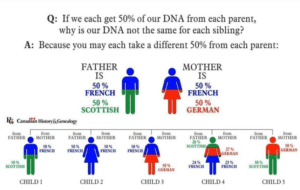29 May Ancestry search- May 29, 2021
Memorial Day, initially referred to as Decoration Day, was observed by many communities after the Civil War, when the nation suffered more than 620,000 military deaths, roughly 2 percent of the total population at the time. John A. Logan, the Commander-in-Chief of the Grand Army of Republic, chose May 30, 1868, to be the day to decorate the graves of Union troops across the nation. From this beginning, Memorial Day is now designated as an annual day of remembrance to honor all those who have died in service to the United States during peace and war. Veterans Day, November 11, celebrates the service of all U.S. military veterans.

Contents
The first Memorial celebration
June 3, 1861, in Warrenton, Virginia, was the location of the first Civil War soldier’s grave ever to be decorated, according to a Richmond Times-Dispatch newspaper article in 1906. This decoration was for the funeral of the first soldier killed in action during the Civil War, John Quincy Marr (picture on the left), who died on June 1, 1861, during a skirmish at the Battle of Fairfax Courthouse in Virginia.
On Saturday, June 1, 1861, a company of Union Army cavalry on a scouting mission entered the streets of Fairfax Court House after driving back one Confederate picket and taking another prisoner. At that time, two companies of cavalry and Marr’s Warrenton Rifles infantry company occupied the town. The Confederate cavalry began to retreat and cut off part of the Warrenton Rifles from those who faced the Union cavalry charge. Only about 40 of the men from the company were in a position to combat the Union cavalrymen.
Lieutenant Charles Henry Tompkins of the 2nd U.S. Cavalry Regiment led the Union force between 50 and 86 men separated into two groups as they rode through the village. Captain Marr challenged the riders, asking, “What cavalry is that?” These were his last words. Scattered shots were fired as the Union cavalry rode through, and Captain Marr fell dead. Marr was not in the immediate presence of any of his men that night, so soon after he fell, no one knew where he was or what may have happened to him. His body was found later in the morning.
After Marr fell, first appeared former and subsequent Virginia governor and later major general William “Extra Billy” Smith, who had just resigned his seat in the U.S. Congress. He was from Warrenton and had helped raise the company. He took command in the absence of the company’s leaders. Soon thereafter, Lieutenant Colonel (later Lieutenant General) Richard S. Ewell, who had just been placed in charge of Confederate forces at Fairfax Court House, came upon the company. Lt. Col. Ewell had received a shoulder wound as he emerged from the village’s hotel as the Union force first rode through the streets, so he was bleeding as he took charge of the infantry company in the field and redeployed 40 of them. Ewell soon sent for reinforcements, and Smith redeployed the men again in the same general area but a less exposed position about 100 yards forward. After the Union cavalry rode through the village, they regrouped and returned through the village streets. A volley from the redeployed men of the Warrenton Rifles turned them back. The Confederates fired additional volleys at the Federals as they tried to pass through town again on their way back to their base near Falls Church, Virginia. After a third failed attempt to ride past the Confederates, the Union men were forced to leave town toward Flint Hill in the Oakton area of Fairfax County to the north of the City of Fairfax with several wounded men.
Confederate casualties in the affair were one dead, four wounded (including Lt. Col. Ewell), one missing, according to their report. A later account states that only two were wounded, but five were captured. The Union force lost one killed, four wounded (including Lt. Tompkins), three missing who were taken as prisoners. The Union soldier killed was identified as Private Saintclair. Governor Smith later reported that a spent round ball had apparently hit Marr because he had a large bruise above his heart, but the bullet had not penetrated his skin.
Captain Marr’s body arrived in Warrenton that evening. The following afternoon a large crowd attended a ceremony in the clerk’s office yard before his burial in the Warrenton Cemetery.
Charles Henry Tompkins received the Medal of Honor for his actions at the 1861 battle. His was the first action of a Union Army officer in the American Civil War for which a Medal of Honor was awarded, though not until 1893. His citation reads: “Twice charged through the enemy’s lines and, taking a carbine from an enlisted man, shot the enemy’s captain.”No other account referenced on this page states that Tompkins personally shot Captain Marr.
A monument to Captain Marr was erected on June 1, 1904, near the Historic Fairfax County Courthouse entrance, which was moved in October 2020 to the Stuart-Mosby Civil War Cavalry Museum in Centreville, VA. The monument reads: “This stone marks the scene of the opening conflict of the war of 1861–1865, when John Q. Marr, captain of the Warrenton Rifles, who was the first soldier killed in action, fell 800 feet south, 46 degrees West of the spot. June 1, 1861. Erected by the Marr Camp, C.V., June 1, 1904.
 How come I do not look like any of my brothers and sisters?
How come I do not look like any of my brothers and sisters?
If you do not look like either parent, that is hard to explain. However, not looking like your siblings could be a product of the random distribution of your parent’s DNA. In the attached example, child #2 shares no DNA with child #5, yet they have the same parents.
This discussion recently emerged amongst and some of my DNA-smart researchers and myself when I asked about my own family’s DNA. My oldest child (who looks like me) has 37% Scottish DNA, while I have 26%, and my wife has 23%. How can one of my children have more Scottish DNA than either parent? The answer is that she ended up with an abundance of our independent Scottish DNA. That also helps explain why she is the only red-headed, blue-eyed child in either family.
 Still don’t know what to get dad for Father’s Day?
Still don’t know what to get dad for Father’s Day?
Story Worth recently interviewed me to get my opinion on their website and how to improve their product. A company that listens to its customers makes them better!
One of my kids gave me StoryWorth as a gift, and I have become a fan. My clients are supportive of capturing their family legacy but struggle to gather their own stories. Here is an inexpensive way to help them capture and preserve excerpts to their story. If you look, there is a Father’s Day coupon out on the internet. If you sign up, please enter DancestorsGenealogy as who referred you!



 How come I do not look like any of my brothers and sisters?
How come I do not look like any of my brothers and sisters? Still don’t know what to get dad for Father’s Day?
Still don’t know what to get dad for Father’s Day?